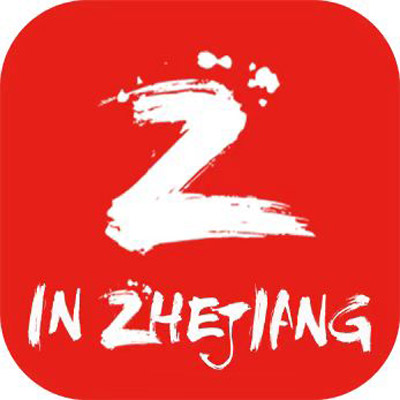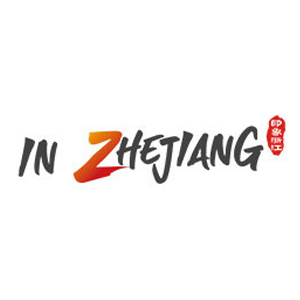Zhejiang Cultural Imprints | Wu Opera
2020-06-16 09:09:52 source: www.qz.gov.cn
"Zhejiang Cultural Imprints" is a series of introductory articles introducing some of the most influential cultural heritages and cultural imprints in Zhejiang province. Today's topic is Wu Opera.

(Wu Opera)
Wu Opera is an art form of traditional Chinese theater that combines music, vocal performance, dance, and martial arts. It originated in Zhejiang Province.
Wu Opera, which is centered in Jinghua, is popular in places such as Jinghua, Lishui, Linhai, Jiande, Chun’an, and the northeast parts of Jiangxi Province like Yushan, Shangrao, Guixi, Boyang, Jingdezhen, etc. It is the combination of six famous Opera Tune Patterns, that is, the high-pitched tune, Kun opera tune, Luantan tune, Anhui opera tune, Tanhuang tune, Shi tune. Traditionally, it is named Jinghua Opera, and for the reason that JingHua is called Wuzhou in ancient times, so here came the name Wu Opera from the year 1949.
Jinghua has been the commercial trade region since Ming and Qing Dynasty because it was the place to trade salt and silk with Jiangxi Province and also to transport paint and china products to Zhejiang province. Moreover, abundant natural resources contribute to it becoming a place of traditional varieties of operas. For example, the Yiwu tune which was popular in the mid-Ming dynasty formed in the Jinghua government, namely, Yiwu county. In addition, the Gao tune, Kun opera tune formed during the later Ming Dynasty, Luantan tune in the early Qing Dynasty, and the Hui Opera in the mid-Qing Dynasty, were all once popular in Jinghua.
The high-pitched tune can be divided into houyang, xiwu, xi’an, and songyang. The houyang high-pitched tune which is good at playing martial play is popular in Dongyang and Yiwu region. Some people think that may derive from Yiwu accent. Xiwu high-pitched tune got its name for it once started opera training schools in Xiwu village in the northern part of Jinghua. Its tune is much softer and plainer than the Xi’an high-pitched tune and it is said to have something to do with the Huichiya tune. The Xi’an high-pitched tune is so-called because Quzhou was once named Xi’an in ancient times and it has been popular in Quzhou since then. According to legend, it is closely related to the Yiyang tune or some may believe it evolved from the Xiping tune. It is characterized by more lyrics but less melody. The above three tunes all have one person lead the tune and other people echo with gong and drum to help the section, thus let the tune deep into the heart.
Most high-pitched tunes are characterized by percussions, like gong and drum, help the section, regardless of the supporting string; one person sings while other people echo together with a loud and sonorous tone. However, Xiwu Gaoqiang and Songyang Gaoqiang have band accompaniment, which is one special form of the various Gaoqiang in our country. Different plays in Gaoqiang have different stated formulas. In the beginning, the long and short verse (a pre-Tang verse form consisting chiefly of seven-character lines interspersed with shorter or longer ones) was used. There are many repertoires in Gaoqiang, like Huanyinji (Story of the Shadow of Scholar-tree), Hezhuji (Story of the Closing Pearl), and Baituji (Story of White Rabbit).
Kunqu Opera, commonly known as "Caokun" or "Jinkun", is one of the branches spreading in Jinhua and its vicinity. It is performed in the grass platform and temple fair in the rural areas, with farmers as the main target audience. Therefore, its language is much popular; the plot is complicated and intricate; its aria doesn’t rigidly adhere to the four-tone pattern, and the performers mainly show the traditional martial arts and show a full-scale traditional opera. After the Ming dynasty, it was regarded as the orthodox Jinhua Opera among the numerous tunes. Actually Kunqu Opera is one branch in Quzhou (present Quxian County area) and Jinhua. As it has been simplified and changed by combining its language and tune with the local customs, it is called “Caokun” today. Now its list of plays is performed little, part of which is admitted by Luantan, like the fragments of Kuntou, Xiaotaohong (Young Pink), Xinshuiling (New Shuiling) and Xiahushan (Going Downhill of the Tiger Mountain) in Luantan.
Luantan is also called “Pujiang Luantan” as most of the specialized Luantan troupes come from Pujiang. Its main tune is Erfan, Sanwuqi (Three, Five, Seven) and Luhua. It is popular not only in Jinhua, Quzhou, and Yanzhou (present Jiande, Zhejiang) but also in Changhua and Tonglu. Erfan shares the same characteristics as operas in northern China. Some believe that it originates from the tune of West Qin; some others believe that it comes from Chuiqiang and Siping Tune in Anhui. Sanwuqi shares the same characteristics with operas in southern China, belonging to the early Chuiqiang. Some think its formation had something to do with the tunes of Huizhou, Siping, and Taiping in the south Anhui. Luhua develops from Chuiqiang, a kind of left voice of Anhui Opera.
According to the Dictionary of Chinese Operas: Luantan, in Jinhua Opera, refers to the four tunes of “Sanwuqi”, “Luhua”, “Erfan” and “Bazi”. “Sanwuqi” and “Luhua” tunes evolve from “Shibei” tune in Anhui, performed mainly by flute, with magnificent, fluent, and stretching tunes. It is characterized by more tunes and fewer words while singing; and later it develops into “Dieban”, with more words and fewer tunes. “Erfan” is evolved from Qin tune after it spread into the south, and then develops into four different tunes in Jinhua Opera named “Chizi”, “Xiaogong”, “Zhenggong” and “Fanzi”, and different modes like “Daoban”, “Yuanban”, “Liushui”, “Jinpi” and “Duoban”, with their respective characteristics of impassion, sonority, solemnity and depression. “Bazi” also has modes like “Daoban”, “Huilong” and “Yuanban”. According to the quality of tunes, “Erfan” generally relates to “Sanwuqi” while “Luhua” to “Bazi”. There is a list of plays like Luhuaxu (reed catkin), Guizhixiezhuang (Guizhi Writes the Complaint), Xuelimei (Plum in Snow), and Zhenzhushan (Pearl Shirt).
Anhui Opera was brought by people from the south Anhui Province. During the late Qing Dynasty, numerous people in Anhui moved to Jinghua and its environments, most of whom did business. Thus Anhui Opera came here. The local Anhui Opera troupes in Jinghua and Quzhou amount to over thirty, and there are over ten local training schools just set up around 1918. The Anhui troupes of Jinghua Opera have their unique style, characterized by the ancient tune of Anhui Opera like Bazi, Luhua (reed catkins), and Chuiqiang, etc. They sing Xipi and Erhuang, give a straightforward, bold, plain, and healthy performance, with a list of plays like Erjingong(second malignancy), Famen Temple, Qinglonghui, and so on. Among the traditional theatrical pieces, the performance style of Huoshaozidu (The Burning Zidu) and Shuiqinpangde (Catching Pangde in Water) is rare in the Bejing Opera today.
Tanhuang tune, according to legend, originated from Suzhou Tanhuang. During the reign of Emperor Qianlong and Jiaqing in the Qing Dynasty (1936-1820), there was Tanhuang choir in Jinghua. Some believe that Tanhuang's tune was brought here by the female performers on the boats to and fro between Quzhou and Lanxi. In the beginning, it was just an amateur choir, and then it developed into an opera by Jinghua Opera performers, being one tune of Jinghua Opera. It can be divided into Pujiang Tanhuang, Lanxi Tanhuang, and Dongyang Tanhuang, with a list of plays like Sengnihui(monks and nuns), Duanqiao(broken bridge), Mudanduike(a story about peony), and so on. The traditional theatrical pieces sorted out after liberation like Sengnihui and Duanqiao has been innovated both in the script and in performance.
Shi tune is a general term referring to the popular tunes in a particular locality during the Ming and Qing Dynasties, some originating from the common folk songs of Ming and Qing Dynasties, some belonging to Nanluo, some from Youtan, and some from local tunes. Evolved from the local folk songs and dances, it is a kind of tunes showing the country life, with a list of plays like Zouguangdong(Life in Guangdong), Maimiansha(sell cotton yarn), Wangpomaji(grammar Wang scolded the chicken), and so on.
The above six tunes are not used in confusion in Jinhua Opera. Instead, every single tune has its special list of plays. At first, the high-pitched tune, Kun opera tune, and Luantan tune give a performance in their respective troupe, and then they develop into a joint troupe, with different combinations. A theatrical troupe, with the high-pitched tune, Kun opera tune, and Luantan tune performing concurrently, is called ‘tri-joint troupe’. After Anhui Opera came to Jinghua, some tri-joint troupe gives up Gao melody and perform Anhui Opera concurrently, and some Anhui Opera troupes perform Luantan tune concurrently. Later, Tanhuang tune and Shi tune are also adopted.
(Executive Editor: Ye Ke)
read more




